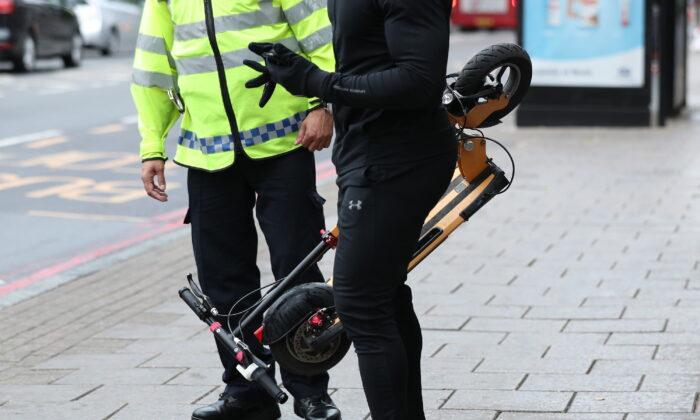More than 240 pedestrians in Britain were injured or killed as a result of a collision with an e-scooter last year, according to the Department for Transport (DfT).
Pedestrians and cyclists were the main type of users involved in collision with e-scooters, with accidents happening most often at 8 a.m. and around 4 p.m.
The DfT considers e-scooter users as “one of the vulnerable user groups.”
“They are not protected by a vehicle body in the same way car users are, and tend to be harder for drivers to see on the road. They are, therefore, particularly susceptible to injuries,” the DfT said.
Those involved in accidents suffered injuries, such as fractured arms and legs, broken back or neck, internal injuries, and bruising.
Compared to 1,352 collisions in 2021, there were 1,369 accidents last year. There were 1,458 casualties in collisions involving e-scooters, compared to 1,434 in 2021. Last year 12 people were killed compared to 10 in 2021.
London’s Metropolitan Police reported around a third of all casualties involving e-scooters in the country.
The specialised unit was set up to provide, among other things, insight into safety trends related to new and evolving technologies, such as e-scooters and electric vehicles.
Roads minister Baroness Vere said that, “Any injury or death on our road network is one too many.”
The Director of the RAC Steve Gooding called for a new approach to tackling road safety.
“As the e-scooter trials rumble on these figures show that the vehicles are in frequent use—and apparently all-too frequent collisions—across the whole country. Real life is very quickly getting ahead of legislation,” Gooding said in a statement.
Rules and Regulations
Some of the largest electric scooter rental companies, such as Lime and Dott, have vouched for the safety and reliability of their e-scooters.“Our vehicles are also independently tested to confirm compliance with safety and performance standards,” Lime said in a statement.
Dott’s e-scooters are fully compliant with local laws for maximum safety, the company said.
“Dott’s geofencing automatically controls and stops riders from traveling through no-go zones, leaving city boundaries, or ending a ride in no-park zones. Our speed zones also automatically adjust the vehicle speed in areas where riders need to drive extra carefully, for example, near schools, hospital entrances, or with high numbers of pedestrians,” Dott added.
Currently, e-scooters can only be used on roads in England if they are part of a trial rental scheme. There are ongoing trials in around 30 areas of England.
It is still illegal to use privately-owned e-scooters or other powered transporters on public roads.
Trial e-scooters can be used on the road (except motorways) and in cycle lanes, while riding on the pavement or using a mobile phone while using the vehicle is banned.
According to the police, users who don’t hold the correct license will be fined up to £100 and have three to six penalty points on their license. There is a £300 fine and six penalty points on the licence for having no insurance.
The government guidance on e-scooter trials, last updated in May, said that the maximum speed for an e-scooter is 15.5 mph, with some areas limited to a lower maximum speed.
Transport for London (TfL) does not permit carrying e-scooters or e-unicycles on London Underground, in stations or at other public transport premises.
“This safety step comes after defective lithium-ion batteries in privately-owned e-scooters and e-unicycles caused fires on our network,” TfL said.
Train operating companies Southern Railway and ThamesLink have banned all e-scooters, e-unicycles, e-skateboards, and hoverboards on their trains and stations from June 1.





